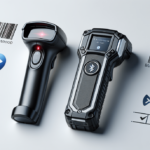Understanding Dropoff Trackers
A dropoff tracker is a specialized software tool designed to provide real-time monitoring of your delivery processes from the moment an item is shipped until it reaches the customer. By centralizing delivery data, dropoff trackers enable businesses to efficiently manage multiple deliveries, ensuring that each package is tracked with precision.
How Dropoff Trackers Work
Dropoff trackers utilize various technologies, such as GPS and barcode scanning, to monitor the location and status of each delivery. This real-time data allows businesses to:
- Track the exact location of packages
- Receive automated notifications and alerts
- Manage delivery schedules effectively
The user-friendly interfaces of dropoff trackers ensure that managers can access necessary information swiftly, facilitating prompt decision-making and issue resolution.
Types of Dropoff Trackers
There are several types of dropoff trackers available in the market, each catering to different business needs:
- GPS-Enabled Trackers: Utilize satellite technology for precise location tracking.
- Barcode Scanners: Use handheld devices to scan and monitor package movements.
- Integrated Logistics Platforms: Combine dropoff tracking with broader logistics management functionalities.
Choosing the right type depends on factors such as business size, delivery frequency, and budget.
Benefits of Using a Dropoff Tracker
Implementing a dropoff tracker offers numerous advantages for businesses:
- Real-Time Tracking: Stay informed about delivery statuses at every stage.
- Optimized Delivery Schedules: Identify and address potential delays proactively.
- Enhanced Visibility and Accountability: Improve transparency across the delivery process.
- Improved Customer Communication: Provide customers with accurate delivery updates, reducing inquiries and increasing satisfaction.
- Data-Driven Insights: Analyze delivery data to identify trends and areas for improvement.
According to a 2023 logistics report by ShipScience, businesses using dropoff trackers saw a 20% increase in on-time deliveries and a 15% reduction in delivery-related customer complaints.
Choosing the Right Dropoff Tracker for Your Business
Selecting the appropriate dropoff tracker involves evaluating several key factors:
- Cost: Ensure the software fits within your budget while offering necessary features.
- Features and Capabilities: Look for functionalities that align with your business needs, such as real-time tracking, notifications, and analytics.
- Integration: Choose a tracker that seamlessly integrates with your existing systems, including CRM and inventory management tools.
- Customization: Opt for software that allows customization of fields, reports, and notifications to suit your specific requirements.
- Technical Support: Reliable customer support is crucial for troubleshooting and maximizing the software's potential.
By carefully assessing these factors, you can select a dropoff tracker that not only meets your current needs but also scales with your business growth.
Implementing a Dropoff Tracker
Step-by-Step Setup Guide
- Select the Software: Choose a dropoff tracker that aligns with your business requirements.
- Create an Account: Provide necessary details such as company name, address, and contact information.
- Integrate with Carriers: Connect the tracker with your preferred shipping carriers for seamless data import.
- Add Deliveries: Input delivery information, including package details and delivery addresses.
- Train Your Team: Ensure that delivery drivers and staff are proficient in using the tracker.
Adding Deliveries to Your Tracker
Adding deliveries involves entering specifics about each shipment, such as weight, dimensions, shipping address, and delivery timeframe. Most trackers integrate with major shipping carriers, allowing for automatic data import and reducing manual entry errors.
Maximizing Dropoff Tracker Features
Real-Time Tracking
Real-time tracking allows you to monitor the exact location of your deliveries at any given moment. This feature provides:
- Immediate updates on package status
- Estimated delivery times
- Visibility into potential delays
For instance, if a delivery is delayed due to traffic or weather conditions, you receive instant notifications, enabling you to inform customers proactively.
Notifications and Alerts
Customizable notifications keep you informed about key events in the delivery process. You can set up alerts for:
- Delivery exceptions or delays
- Successful deliveries
- Route deviations
These alerts can be sent via email, text message, or push notifications, ensuring you stay updated regardless of your location.
Analyzing Delivery Data
Dropoff trackers provide comprehensive analytics and reporting tools that help you understand your delivery performance:
- Delivery Times: Monitor how long deliveries take from shipment to arrival.
- Success Rates: Assess the percentage of on-time vs. late deliveries.
- Operational Efficiency: Identify bottlenecks and areas where processes can be streamlined.
Utilizing these insights allows you to make informed decisions to enhance your delivery operations.
Integrating with Other Business Tools
To maximize efficiency, integrate your dropoff tracker with other essential business systems such as:
- Customer Relationship Management (CRM): Sync delivery data with customer profiles to provide personalized updates.
- Inventory Management: Ensure accurate tracking of stock levels based on delivery status.
- Accounting Software: Automate invoicing and payment tracking based on delivery completions.
Integration reduces manual data entry, minimizes errors, and ensures all business functions are aligned.
Best Practices for Optimizing Your Deliveries
To fully leverage the capabilities of a dropoff tracker, consider the following best practices:
- Regular Monitoring: Continuously track delivery statuses to quickly address any issues.
- Automate Notifications: Set up automatic alerts to stay informed without manual checks.
- Analyze Performance Metrics: Use data insights to identify and implement improvements.
- Integrate Systems: Ensure your dropoff tracker works seamlessly with other business tools.
- Employee Training: Provide comprehensive training to ensure your team uses the tracker effectively.
Common Issues with Dropoff Trackers and How to Resolve Them
While dropoff trackers are highly effective, you may encounter some common challenges:
- Technical Difficulties: Software glitches or connectivity issues can hinder tracking accuracy.
- Shipping Carrier Errors: Mistakes from carriers can lead to inaccurate tracking information.
- Data Input Errors: Incorrect information entry can disrupt the tracking process.
To resolve these issues, contact your dropoff tracker provider’s technical support team. They can assist with troubleshooting, ensuring that problems are addressed promptly to maintain the integrity of your delivery tracking.
Conclusion
Implementing a dropoff tracker is essential for businesses that rely on timely deliveries. By providing real-time monitoring, automated notifications, and insightful data analytics, dropoff trackers enhance your delivery operations and boost customer satisfaction. By selecting the right tracker, integrating it with your business systems, and adhering to best practices, you can streamline your delivery process, reduce costs, and foster customer loyalty.








